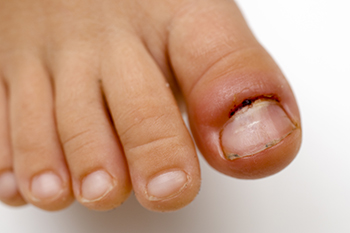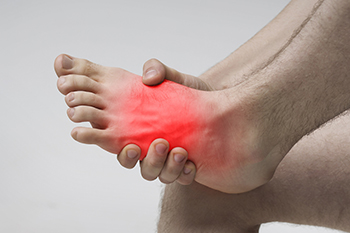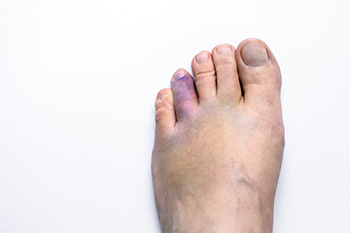

Sever's disease, despite its name, is not a true disease, but rather a common pediatric foot condition. It primarily affects active children and adolescents, typically between the ages of 8 to 14, who are engaged in physical activities or sports. This condition is characterized by pain and discomfort in the heel, particularly the growth plate at the back of the heel bone, where the Achilles tendon attaches. Sever's disease, or calcaneal apophysitis, occurs as a result of the growth plate being pulled on by the Achilles tendon. The growth plate is still developing during adolescence and is vulnerable to injury. Repetitive stress from activities such as running, jumping, or sudden growth spurts can lead to inflammation, causing heel pain. The discomfort tends to worsen with physical activity and can be particularly bothersome during and after exercise. Understanding Sever's disease is vital for parents, coaches, and young athletes. While it is usually a self-limiting condition, meaning it resolves as the growth plate closes, it can be painful and disruptive to a child's daily life. Early recognition and appropriate care are important to ensure a smoother path to recovery for adolescents affected by Sever's disease. If your active child has heel pain, it is suggested that you consult a podiatrist who can accurately diagnose and treat Sever’s disease.
Sever's disease often occurs in children and teens. If your child is experiencing foot or ankle pain, see one of our podiatrists from Grand Blanc Family Footcare. Our doctors can treat your child’s foot and ankle needs.
Sever’s Disease
Sever’s disease is also known as calcaneal apophysitis, which is a medical condition that causes heel pain I none or both feet. The disease is known to affect children between the ages of 8 and 14.
Sever’s disease occurs when part of the child’s heel known as the growth plate (calcaneal epiphysis) is attached to the Achilles tendon. This area can suffer injury when the muscles and tendons of the growing foot do not keep pace with bone growth. Therefore, the constant pain which one experiences at the back of the heel will make the child unable to put any weight on the heel. The child is then forced to walk on their toes.
Symptoms
Acute pain – Pain associated with Sever’s disease is usually felt in the heel when the child engages in physical activity such as walking, jumping and or running.
Highly active – Children who are very active are among the most susceptible in experiencing Sever’s disease, because of the stress and tension placed on their feet.
If you have any questions, please feel free to contact our office located in Grand Blanc, MI . We offer the newest diagnostic and treatment technologies for all your foot and ankle injuries.

Experiencing a sudden, sharp pain in your big toe can be agonizing and concerning. This discomfort can stem from various underlying causes, each demanding attention and care. One common culprit is gout, a form of arthritis where the excess buildup of uric acid crystals triggers sharp, intense pain in the big toe joint. Nerve entrapment or compression, as seen in conditions like Morton's neuroma, may also cause sharp, shooting pains. Overuse and strain from physical activities can lead to conditions such as turf toe, characterized by ligament damage and sharp pain at the base of the big toe. Ingrown toenails can induce stabbing pain if left untreated. Furthermore, acute injuries or fractures in the big toe can result in sudden, sharp pain. If you are experiencing any pain in your toes, it is strongly suggested that you seek the counsel of a podiatrist who can correctly diagnose and treat toe pain.
Toe pain can disrupt your daily activities. If you have any concerns, contact one of our podiatrists of Grand Blanc Family Footcare. Our doctors can provide the care you need to keep you pain-free and on your feet.
What Causes Toe Pain?
Most severe toe pain is caused due to a sports injury, trauma from dropping something heavy on the toe, or bumping into something rigid. Other problems can develop over time for various reasons.
Toe pain can be caused by one or more ailments. The most common include:
When to See a Podiatrist
Diagnosis
In many cases the cause of toe pain is obvious, but in others, a podiatrist may want to use more advanced methods to determine the problem. These can range from simple visual inspections and sensation tests to X-rays and MRI scans. Prior medical history, family medical history, and any recent physical traumatic events will all be taken into consideration for a proper diagnosis.
Treatment
Treatments for toe pain and injuries vary and may include shoe inserts, padding, taping, medicines, injections, and in some cases, surgery. If you believe that you have broken a toe, please see a podiatrist as soon as possible.
If you have any questions please feel free to contact our office located in Grand Blanc, MI . We offer the newest diagnostic tools and technology to treat your foot and ankle needs.

Stress fractures are tiny cracks in the bones that can result from excessive pounding or pressure and repeated trauma. One of the most common causes of stress fractures is engaging in high-impact activities. Sports like gymnastics, track and field and tennis, which involve constant pounding on hard surfaces, can put tremendous stress on the bones of your feet. Another significant cause is making sudden changes in the duration, frequency, or intensity of physical activity. Pushing your body too hard without adequate rest and recovery often leads to stress fractures. Wearing ill-fitting or worn-out running shoes without proper foot support can also contribute to stress fractures. Sometimes, anatomical abnormalities like flat feet or high rigid arches can increase your risk of developing stress fractures. Repetitive stress from exercises, especially in sports, can weaken bones over time, making them more susceptible to stress fractures. If you have had a stress fracture in the past, you may be at higher risk of experiencing another one. Women are more prone to stress fractures from osteoporosis, low bone density, irregular menstruation, and poor nutrition. Symptoms of stress fractures can be tricky to diagnose, as they may not show up on X-rays in the early stages. However, common symptoms can include a dull, generalized pain, swelling, and tenderness in a specific spot. This discomfort may worsen during activities and can persist even at rest if left untreated. If you suspect you may have a foot stress fracture, it is suggested that you make an appointment with a podiatrist for an exam and treatment options.
Stress fractures occur when there is a tiny crack within a bone. To learn more, contact one of our podiatrists from Grand Blanc Family Footcare. Our doctors can provide the care you need to keep you pain free and on your feet.
How Are They Caused?
Stress fractures are the result of repetitive force being placed on the bone. Since the lower leg and feet often carry most of the body’s weight, stress fractures are likely to occur in these areas. If you rush into a new exercise, you are more likely to develop a stress fracture since you are starting too much, too soon. Pain resulting from stress fractures may go unnoticed at first, however it may start to worsen over time.
Risk Factors
Stress fractures do not always heal properly, so it is important that you seek help from a podiatrist if you suspect you may have one. Ignoring your stress fracture may cause it to worsen, and you may develop chronic pain as well as additional fractures.
If you have any questions, please feel free to contact our office located in Grand Blanc, MI . We offer the newest diagnostic and treatment technologies for all your foot care needs.

Besides the physical impact of broken toes, they can take a profound psychological toll on athletes because they rely heavily on their feet for mobility. While many dismiss a broken toe as a minor inconvenience, for athletes, it can signify missing crucial games, falling behind in training, or even questioning the longevity of their career. It is a medical setback that should be tended to by a podiatrist and requires coping mechanisms such as mindfulness and visualization. If you are an athlete who has broken your toe, it is suggested that you make an appointment with a podiatrist for treatment and support for your overall well-being.
Broken toes may cause a lot of pain and should be treated as soon as possible. If you have any concerns about your feet, contact one of our podiatrists from Grand Blanc Family Footcare. Our doctors will treat your foot and ankle needs.
What Is a Broken Toe?
A broken toe occurs when one or more of the toe bones of the foot are broken after an injury. Injuries such as stubbing your toe or dropping a heavy object on it may cause a toe fracture.
Symptoms of a Broken Toe
Although the injured toe should be monitored daily, it is especially important to have a podiatrist look at your toe if you have severe symptoms. Some of these symptoms include worsening or new pain that is not relieved with medication, sores, redness, or open wounds near the toe.
If you have any questions, please feel free to contact our office located in Grand Blanc, MI . We offer the newest diagnostic and treatment technologies for all your foot care needs.

While occasional tiptoe walking is normal in toddlers who are exploring their bodies, persistent tiptoe walking may signal underlying issues that require attention from a podiatrist. One common cause is idiopathic toe walking, as sometimes children walk on tiptoe without any apparent reason. This condition usually resolves by the time the child is three years old, but persistent cases may require evaluation. Another potential cause is a tight Achilles tendon, as a shortened Achilles tendon can make it uncomfortable for a child to place their heels on the ground. Some children with sensory processing disorders may prefer tiptoe walking due to heightened sensitivity in their feet. Tiptoe walking can lead to muscle imbalances and joint issues in the long run, which may affect a child's balance and coordination, potentially leading to falls and injuries. If you notice that your child is frequently walking on tiptoe, it is suggested that you make an appointment with a podiatrist for a thorough evaluation and appropriate treatment. Early intervention can help your child develop a healthier, more comfortable gait.
The health of a child’s feet is vital to their overall well-being. If you have any questions regarding foot health, contact one of our podiatrists of Grand Blanc Family Footcare. Our doctors can provide the care you need to keep you pain-free and on your feet.
Tips for Keeping Children's Feet Healthy
If you have any questions, please feel free to contact our office located in Grand Blanc, MI . We offer the newest diagnostic and treatment technologies for all your foot care needs.